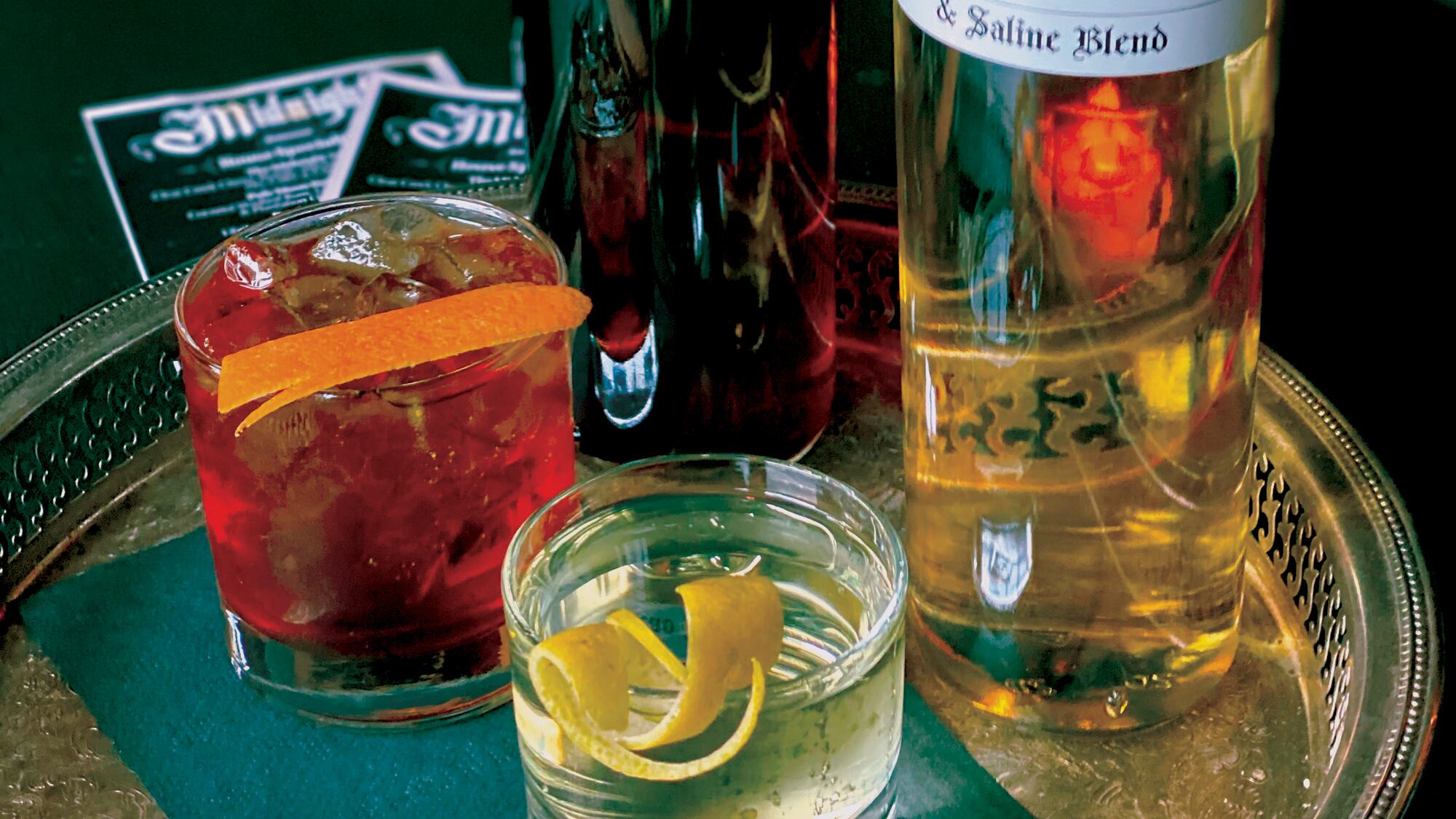Warming spices boil in cider. Lemon rinds steep in hot whiskey. Raisins and orange peel soon macerate in mulled wine. Infused beverages have their moment each fall and, this year, we recommend an oft-overlooked member of that family: vermouth.
Vermouth is a fortified, aromatized wine. Put simply: It’s boozy wine tea. The addition of liquor to wine is what fortifies (or strengthens) the drink. The infusion of herbs, rinds, flowers, roots, stalks—anything found in an alpine meadow–is what makes this drink aromatized.
Though makers have been spiking and bittering medicinal drinks for centuries, the qualities associated with modern vermouths started popping up in 18th century Torino, Italy. As iterations of the drink made their way west into France and Spain, the category evolved to include a dry white version. Now, vermouth includes sweet whites and nutty ambers and crushable vermuts de rosé to drink all day.
In the U.S., vermouth is still best known for its supporting role in cocktails, but some Portland haunts highlight the aperitif for its own merits.
Dame: Natural Vermouth
Vermouth is the antithesis of noninterventionism. Instead of adding nothing to a wine, vermouth makers may add upward of 30 botanicals. Dame is known for its natural wines, so it stocks Muz, a bottle that sits in contradiction as a “natural vermut.” It’s made in Spain by two Italian winemakers who’ve added a classic Torino spice blend to grapes from abandoned vineyards in Catalonia. It’s a cloudy plum color, smells like oregano, and sips like a stale cranberry fizz.
Muz sits on Dame’s menu beside four other vermouths, like a cheesy Scarpa white, and the Vergano Americano bitter red—that tastes as if a witch made soup from a forest floor. A locally made vermouth, the Accompani sweet red from Straightaway is so new it’s not yet on the menu. Steeped in Southeast Portland, Accompani has bitter notes akin to the classic Italian offerings and goes heavy on the cocoa.
Glasses range from $8 to $10.
Urdaneta: Spanish Vermouth
As with Urdaneta’s pintxos, the restaurant’s 10 vermouth offerings are rooted in Spanish tradition with an eye on modernity.
The five white options include Atxa, a Basque vermouth that tastes of lemon drops and Parmesan rind. It’s extra salty from grapes grown near the Atlantic. Alma de Trabanco tastes like Passover charoset. The bright yellow drink is a blend of white vermouth and Spanish cider, nodding to the Trabanco family tradition of pouring acidic cider into sweet vermouth at dinner.
On the red side, there’s Primitivo Quiles, which tastes like a strawberry DumDum. Lustau, a sherry barrel-aged red, carries a warm, nutty flavor.
Though the Urdaneta team will tell you that Spanish vermouth is less bitter than Italian, a newly imported offering from BCN is a tongue-slapper full of thyme, medicinal roots, and burnt rinds. If you like fernet, you’ll love this.
For $14, you can pick and choose a flight of three, or have the team take the reins.
OK Omens: Vermouth for Wine Lovers
The tight, intentional vermouth selection at OK Omens is what one would expect from such a wine-focused restaurant. Bar manager Johnny Reinert reminds drinkers that before the wormwood, gentian and rose hip can bitter fortified wine, great vermouth starts with great grapes.
There are five vermouth options on rotation, and Reinert is happy to give a rundown on which grape varietals ground each mélange of roots and botanicals. He’ll clue you in to how special it is that the Fred Jerbis red is made with old-vine nebbiolo grapes that survived the phylloxera plague of the 19th century. Or that when you taste the saltiness of the Bordiga Rosso di Torino, that salinity isn’t added by the vermouth maker; it’s due to the grape varietal, location or elevation.
“As with wine, it comes back to terroir,” Reinert says.
Pours at OK Omens are $8 a pop.
Cooperativa: Tour de Vermut
New to the menu at the Pearl’s Italian market, the World Vermut Tour flight comes with three 3-ounce pours to remind drinkers that—to quote bar manager Joel Schmeck—”really killer vermouths” are made internationally and domestically. Alongside Spanish Lustau vermut rosé and Cnia Mata red vermouth, Cooperativa features Son of Man’s “Someday” vermouth. Made with the Basque-style Sagardo cider, brewed in Cascade Locks, this dry white warps the vermouth category—a category known to have few requisites other than being made with wine. The cloudy yellow bottle carries tart sips of kumquat and rhubarb.
If drinkers want to opt out of the guided experience, they need only review the top shelf of the fridge behind the bar. It’s stocked with quality vermouths, like the red and white options from northern Italy’s La Canellese vermouth house. These, along with a few other aperitifs, are also sold in bottles at the marketplace.
The Cooperativa World Vermut Tour will set you back $12.
Midnight Society: Vermut de la Casa
Stroll down the streets of Spain, and you’ll find vermut de la casa sitting on bar tops in oversized Mason jars. When it’s an option, vermut de la casa is the best and cheapest choice and is assuredly FDA-unapproved.
The closest you’ll come to scratch-made house vermouth in Portland sits behind the U-shaped bar at Midnight Society. Co-owner and bartender Estanislado Orona makes two secret-menu blends. The white combines Dolin Dry and Padró & Co.’s Myrrha Blanco with saline to give the sweet and nutty mix a tang, like sour verjus. The red is a mix of Dolin and Cocchi Storico reds, set over cacao nibs for a week. The first sip is cherry cola and fudge. As it mellows on ice, clove and banana come out.
If you request a glass, it’ll be $6, served on ice with a twist.

